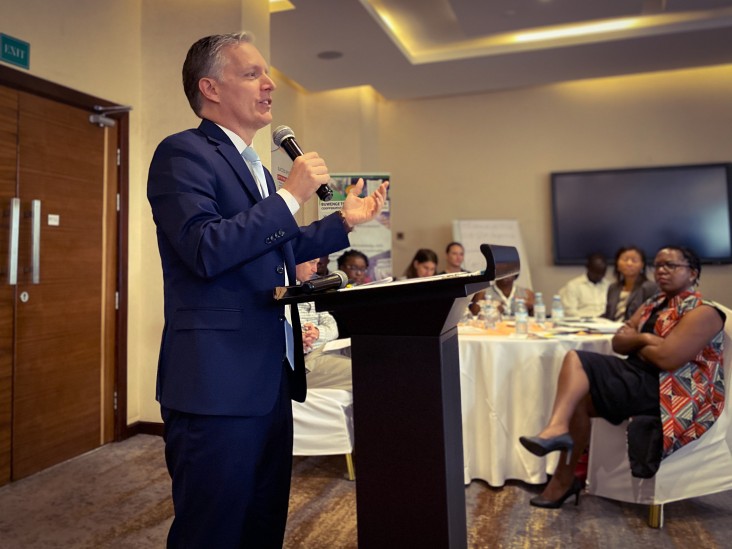Press Release Shim
Speeches Shim

For Immediate Release
KAMPALA – The United States Agency for International Development (USAID) hosted a national close out event on February 25 to celebrate the achievements of the USAID-funded Feed the Future Producer Organizations Activity, which commenced in 2016 and will end in April 2020. The Producer Organizations Activity strengthened business capacity, governance, member services provision, and farmer-led advocacy in 25 secondary agriculture producer organizations in 12 selected districts in Uganda.
Feed the Future is the U.S. government’s global hunger and food security initiative which addresses the root causes of poverty and hunger through providing agricultural knowledge and tools for people to feed themselves. In Uganda, Feed the Future works in 38 districts to make agriculture more productive and profitable, reaching a total population of 14 million people.
The Producer Organizations Activity established 133 new partnerships among the targeted organizations. The total revenue generated through these partnerships was $920,910 in 2019. The activity coached organizations to become more business-oriented through good governance and business management practices. In total, the access to credit for these organizations rose from $84,827 in 2016 to $314,360 in 2019. During this time period, membership in supported producer organizations increased by 97 percent, and the number of farmers accessing services increased to 58 percent in 2019, from only five percent in 2016.
Through the Producer Organizations Activity, USAID supported farmer-led advocacy, allowing organizations to successfully lobby local government for investments worth $350,130 for improving road networks, accessing production and post-harvest handling equipment, and improving storage structures. Nine districts have committed resources in their budgets to continue supporting these platforms.

Comment
Make a general inquiry or suggest an improvement.